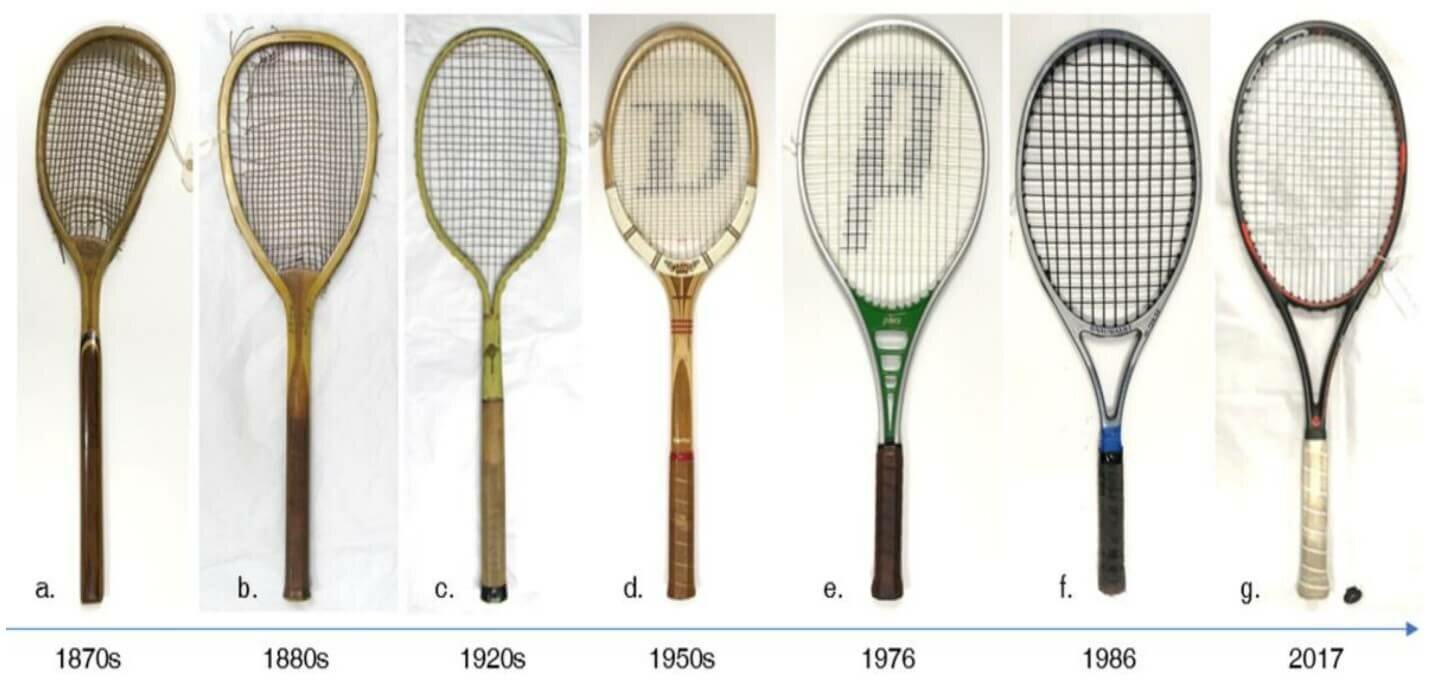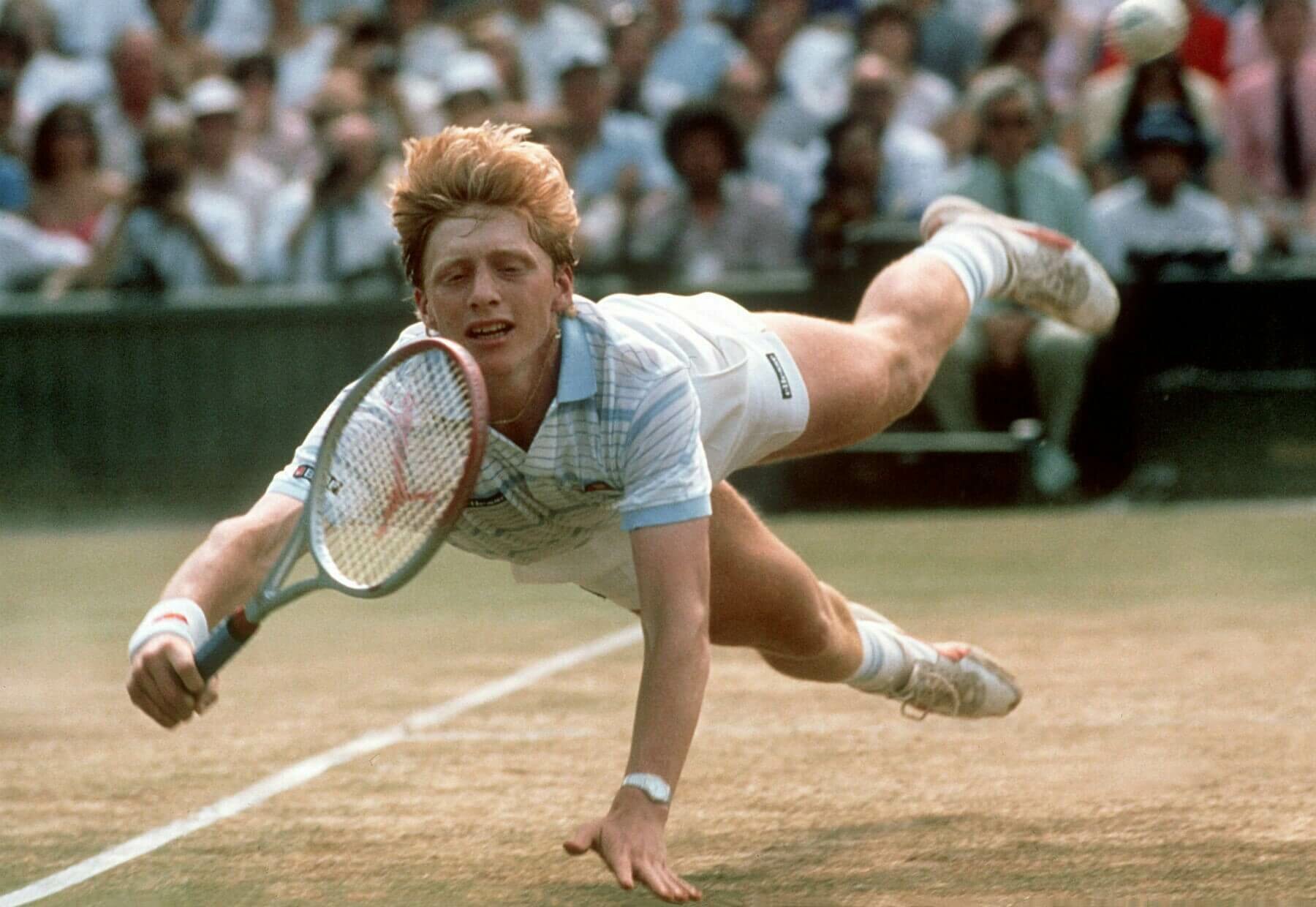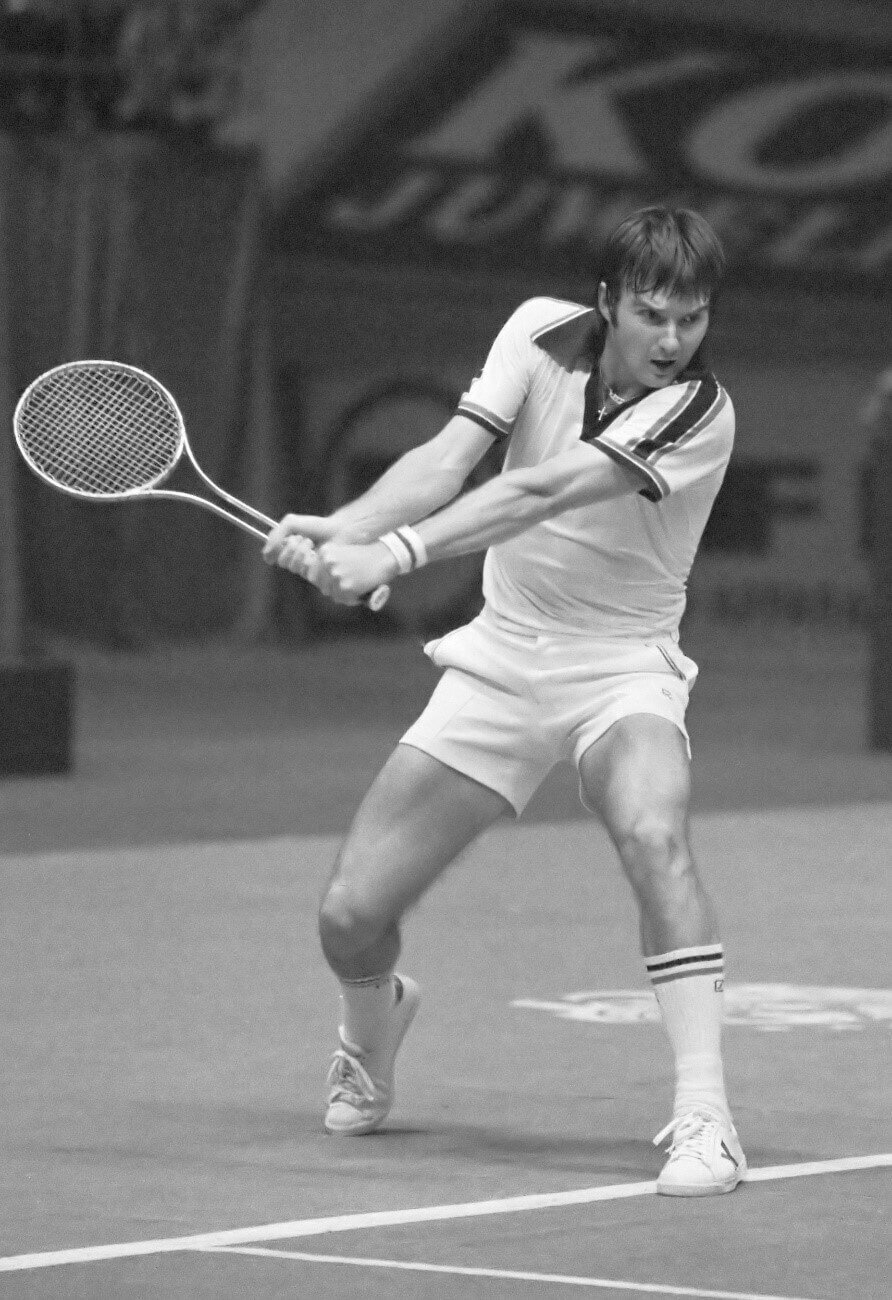THE JOURNEY OF THE TENNIS RACKET

By most accounts, tennis was first played by French monks in the 11th or 12th century, and the first rackets were made out of human flesh. It was more like handball, played first by hitting against a wall, then later over a crude net. While not gruesome, hitting a ball with one’s hand proved a little too uncomfortable after a while, so players began using gloves. Some players then tried using webbing between the fingers of the glove, while others took to using a solid wooden paddle. But by the 14th century, players had begun using what we could legitimately call a racquet, with strings made of gut, bound in a wooden frame.
The Italians are often credited with this invention. By the year 1500, racquets were in widespread use. The early rackets had a long handle and a small, teardrop-shaped head. With a more oval head, they would have looked much like a squash racquet. The game itself was somewhat like squash too, in that it was played indoors with a fairly dead ball. By this time, though, it was always played across a net and not against a wall, unlike squash. In 1874, Major Walter C. Wingfield registered his patent in London for the equipment and rules of an outdoor lawn tennis that is generally considered the first version of what we play today.
The Evolution
We have seen through a series of articles written throughout the years as to how tennis rackets have evolved over the years and how that has helped usher in new styles of play and display completely unique facets of the game. This has not only helped make tennis a game for the masses but it has also given us an opportunity to revel in the sheer physical and technical brilliance of some of the finest proponents of the sport. Finding the right racket can be a lifelong journey; on the court a racket is the extension of the player’s arm. During the perfect shot, both become one – a moment of bliss that all tennis players strive for. It’s not much of a surprise then, that the search for the perfect racket has gone on as long as the history of the game itself.
From the wooden frames which helped players with supreme control and touch to the larger metal pieces which helped increase the durability and consistency of strokes, the racket has kept on evolving, showcasing the impact of sports technology on the game of tennis. As we know, every type of racket that has been developed and used has had its own merits and is a very interesting mirror into the history of the sport and through these works, it has become increasingly clear that the debate around the so called ‘GOAT’ still remains a bit hollow, considering the altogether unique challenges faced by every different generation.
The Present

A very important factor in the rapid development in the rackets was the gradual increase in the popularity of hard-court tennis. As a sport, lawn tennis had always been associated with the out doors and was a sport played in the afternoons under natural light, the introduction of televised coverage led to a demand of night time tennis. This on a grass court was extremely difficult due to the regular wear and tear of the grass, visibility issues for players and the reluctance of many major organizers of playing on grass at night. All this while in the United States many low maintenance hard courts had popped up opening the sport to the masses for the very first time. In due course of time the sheer economic sense and an overall better product had many takers. This was the birth of the Great American Swing as we see today post each year’s Wimbledon.
This change in surface led to a change in patterns of play and the baseline game became more and more prevalent thus, we saw a shift from wooden to more sturdy and reliable frames such as metal and carbon-based rackets.
The light weight, huge sweet spot, and greatly increased power of these first oversized rackets made tennis much easier for non-advanced players, but for powerful, advanced players, the mixture of flexibility and power in the frames resulted in too much unpredictability in where the ball would end up. Hard, off-center shots would momentarily distort the aluminum frame, changing the direction in which the string plane was facing, and the lively string bed would then send the ball rocketing off in a somewhat unintended direction. Advanced players needed a stiffer frame material, and the best material proved to be a mixture of carbon fibers and a plastic resin to bind them together. This new material acquired the name ‘graphite’, even though it isn’t true graphite such as you would find in a pencil or in lock lubricant. The hallmark of a good racket quickly became graphite construction.
As it happens in life that with time things change and evolve such is the case with the tennis racket. From no rackets to this fantastic piece of technology, the sport truly has come a very long way. One thing is for sure, those French monks would be impressed.
Read More
MAPPING THE IMPACT OF CARBON FIBRE RACKETS
SAM BROOKES \
THE MAKER AND ITS GAME
METAL, COMPOSITE AND GRAPHITE: THE DECADE OF OPTIONS
KUSHAGR DIXIT \
THE MAKER AND ITS GAME
THE AGE OF METAL
AVICHAL GUPTA \
THE MAKER AND ITS GAME



